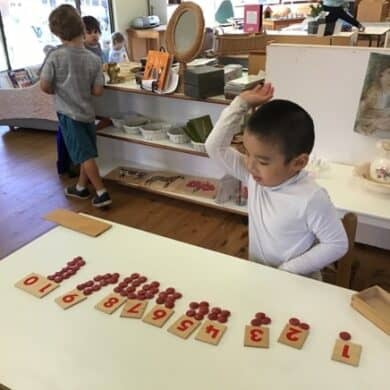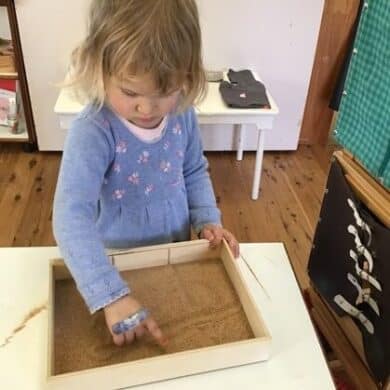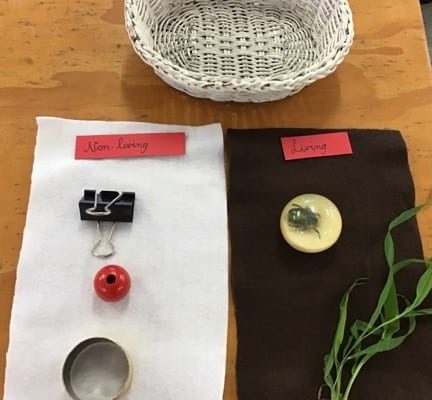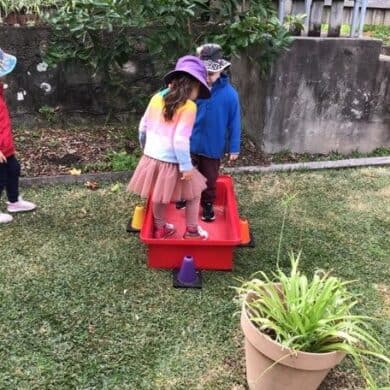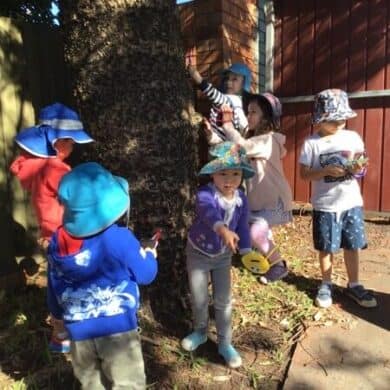Firstly, thank you to Estelle (Antoine’s mum) and her family for volunteering their time to be our class parents. Thank you to all our families that are continuously contributing to the smooth functioning of our classroom.
The Prepared Environment in a 3-6 classroom encourages children to consider both objects and others. Because the environment is adapted to their inner needs, it is attractive and stimulating to them.
Everything in the Prepared Environment has its own special location. After material has been used, it is returned to its original place and condition so that other children can work with it or, not finding it, they know that it is already in use. The order of the environment arouses the children’s desire to maintain it.
It is a great pleasure to observe the children share their knowledge of their 3-6 class environment. We have felt very privileged to have had the opportunity to share in your child’s experiences in their Montessori learning.
Happy holidays to everyone!
Practical Life:
Practical Life in the 3-6 environment provides purposeful activity that develops their co-ordination of movement, promotes independence, using their senses and aids social and language development.
There are care of self-activities such as putting on aprons before painting, chopping, slicing and squeezing. The experiences in ‘Practical Life’ are purposeful and provide constant repetition as it helps the child refine the child’s fine motor skills in this developmental area.
Sensorial:
During the 3-6 period of the child’s life impressions of everything that has been experienced through the senses up to this point begins to be classified and categorised and the senses are refined and honed. This term, the children have been working on sensorial materials such as; The Binomial Cube, building the Pink Tower, Brown Stair, Red Rods and matching the Knobbed Cylinders to their apertures.
Mathematics:
Mathematics provides the basic tools to grasp ideas and problems with ease and enthusiasm. Mathematics is a different form of language, it is used to describe precisely what we observe.
This semester, the children have been progressing through varied maths work such as the Sandpaper Numbers, Number Rods, Teens Board, Counters and Numbers, Golden Bead Material and operations with the Strip Board, Stamp Game and Snake Game.
Language:
Language gives the children the names of all the things around them. Everything that the child can see, smell, touch and taste has a name. Children are intensely fascinated by language.
This term, for the National Simultaneous Storytime reading, the children listened to the story “Chicken Divas” by Lucinda Gifford. The children put together cardboard Chicken Diva Puppets onto paddle pop sticks to take home. The book sits on the bookshelf for the children to share and look at any time.
Cultural:
We want to give the children preparation to be socially capable in their world. We want to prepare children and to expose them to what is to come in the real world. When the children develop their social awareness, they naturally absorb elements of their environment. The children have explored the Indigenous symbols, the different Flags of the World and the culture and heritage of Mexico.
Science:
Science happens when the children put their Practical Life experiences into practice. The children have been experimenting with primary and secondary colours with colour mixing, Non-Living and Non-living and naming and creating a booklet of the different types of vegetation growing in our garden.
Music:
We have been incorporating music as part of our daily routine. We choose one song to feature for the week. We listen to the song and then sing together as a group and do craft activities to extend the children’s interest in Language.
Connection with Nature:
The children love nature and always enjoy working outside. They care for the plants inside and outside of their environment. They were fascinated by the different colours of the leaves and created their own Still Art pictures of Autumn leaves using paint and card. They researched the 14 different leaf shape names and created their own leaf books.
Movement:
In our environment, we provide spaces for children to move freely indoors and outdoors independently. This gives the children the experience to coordinate and control their movements. This involves the mind and the movements working together. The more they use their hands the more coordinated they become. This gives the children something to grasp and manipulate.
This term, the children have designed an obstacle course, they have made Incy Wincy craft spiders and climbed the “drain pipe” outside. The children are enjoying gardening and looking after our herbs and banana tree with our Horticulturalist, Steve.
We continue sweeping, raking, watering the plants and making sure there is water in the bird bath for the wildlife.
Wishing you all a very happy holiday, looking forward to seeing you all in Term 3!
Christine, Dharini, Akari, Alyssa, Viviane and Sharon







